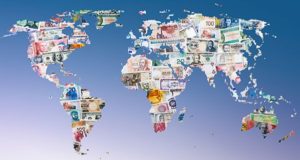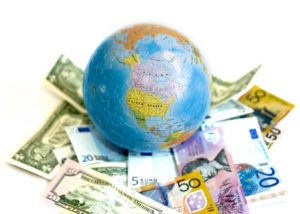 Current attitudes aren’t too kind to the old American way of doing business. In our globalized economy, the most enthusiastically touted approaches are those adopted by centralized, state-dominated economies such as China, Brazil and Russia as well as–somewhat less oppressively–those of the major E.U. states.
Current attitudes aren’t too kind to the old American way of doing business. In our globalized economy, the most enthusiastically touted approaches are those adopted by centralized, state-dominated economies such as China, Brazil and Russia as well as–somewhat less oppressively–those of the major E.U. states.
Yet the U.S. may well be constructing the best sustainable business model for the 21st Century. It is an approach built on the country’s greatest enduring strength–an innovative business culture driven increasingly by a diverse pool of immigrants.
This model, of course, lacks the kind of centralized control beloved by many pundits. Yet its virtues are also missing from statist-oriented European or East Asian capitalism. These other regions’ systems may be more disciplined in their thinking, but they do not draw as well on the diversity of human experience and connections that drive  America’s post-racial economy.
America’s post-racial economy.
This is not to suggest that state-based, national capitalism is inferior, but that it may not apply so well to this vast, highly diversified economy–just look at the stimulus. If the U.S. wants to retain pre-eminence, it needs to go with what makes it a great country: its protean national and increasingly post-racial business culture.
This evolution is increasingly evident at the very top of our economy. Between 1990 and 2005 immigrants started one quarter of all venture-backed public companies. Large American firms are also increasingly led by people with roots in foreign countries, including 14 of the CEOs of the 2007 Fortune 100. Even the top tier of corporate America–once the almost-exclusive reserve of native-born Anglo-Saxon–increasingly reflects the diversification of the larger society.
 Already, for example, eight Indian American CEOs run U.S. corporations with over $2 billion in sales, including companies like Citicorp, Adobe Systems and Pepsico. Pepsi’s historic rival, Coca Cola , is now run by Muhtar Kent, a native of Turkey. Foreign CEOs also include Kellogg’s Australian-born David Mackay and Ethan Allen’s M. Farooq Kathwari, yet another native of India.
Already, for example, eight Indian American CEOs run U.S. corporations with over $2 billion in sales, including companies like Citicorp, Adobe Systems and Pepsico. Pepsi’s historic rival, Coca Cola , is now run by Muhtar Kent, a native of Turkey. Foreign CEOs also include Kellogg’s Australian-born David Mackay and Ethan Allen’s M. Farooq Kathwari, yet another native of India.
This process will intensify in the coming decades. Take for instance the case of Li Lu, a former Tiananmen Square activist now widely expected to take the helm of Warren Buffett’s Berkshire-Hathaway when the old billionaire retires. Imagine if a former American radical was placed in charge of one of China’s huge state-supported enterprises. Not likely.
One critical harbinger can be seen in the current crop of students at top U.S. business schools. Between one-third and one-half all students at Stanford, MIT, University of Pennsylvania, University of Chicago and UC Berkeley come from abroad. These schools are training camps for immigrants transitioning into careers as American entrepreneurs.
Equally important, immigrant commerce also thrives at the grassroots level. It manifests most visibly in the proliferation of small stores, restaurants, food-processing businesses, garment factories and trucking lines. Overall, immigrants are 60% more likely to start a new business than native-born Americans. The number of self-employed immigrants has grown even in New York City, where the number of self-employed among the native-born has dropped.
Immigrant businesses have thrived by providing basic services, such as banks, insurance agents, funeral homes and grocery stores. Some of these businesses arose because the mainstream community had failed to identify opportunities in these markets or had consciously decided to exclude them.
This follows a historical pattern. In the past many immigrants succeeded by focusing on an economic specialty–Jews in the garment industry, Chinese in laundries, Greeks in diners, and Italians in green groceries, barbershops and fish stores. Ultimately, some moved beyond these niches and began to develop whole new business models. One clear example is A. P. Giannini’s Bank of Italy in San Francisco, which eventually became Bank of America , a pioneer in mass market branch banking. Other ethnic businesses, often drawing on ways of doing business brought from abroad, have propelled the growth of whole industries, such as the garment industry in New York and later Los Angeles.
stores. Ultimately, some moved beyond these niches and began to develop whole new business models. One clear example is A. P. Giannini’s Bank of Italy in San Francisco, which eventually became Bank of America , a pioneer in mass market branch banking. Other ethnic businesses, often drawing on ways of doing business brought from abroad, have propelled the growth of whole industries, such as the garment industry in New York and later Los Angeles.
There is clearly something in the immigrant experience that encourages innovation–one can call it the advantage of non-acceptance. Take the founding generation of the film industry–Samuel Goldwyn, Louis B. Mayer, Harry Cohn, Jesse Lasky, Adolph Zukor. They had their roots in the Jewish enclave economy in the eastern cities. The great historian Irving Howe notes that the immigrant need to find an unoccupied or underserved niche shaped these often “vulgar, crude and overbearing” men. That they became founders of the nation’s premier cultural industry, Howe noted, “was something of a miracle and something of a joke.”
We are now witnessing a continuation of this process, and on a scale simply not seen in other countries. In 2005 the U.S. swore in more new citizens than the next nine countries put together. The national immigration debate may focus largely on low-skilled newcomers, but more than half of all skilled immigrants in the world also come to the U.S. Even with the continent’s slow-growing population, Europe continues to be a major source of American immigrants, particularly skilled workers, with some 400,000 E.U. science and technology graduates residing in the U.S.
These newcomers are a prime source of entrepreneurial vitality. In the 21st century Asians, like the Jews and Italians before them, have concentrated in specific niches and expanded outside the boundaries of historic ghettos. Indians from the subcontinent, who arrived in large numbers starting in the 1970s, specialized in hotels and motels across the country. Koreans opened up green groceries in New York and Los Angeles. Vietnamese became well-known for nail parlors, and Cambodians for owning doughnut stores. Overall Asian enterprises expanded roughly twice the national average through the first several years of the new century.
 This pattern can be seen particularly in food-related businesses. In Houston, once dominated by Southern cooking, nearly one in three restaurants serves Mexican or Asian cuisine. Together they account for more establishments than hamburger, BBQ and Italian restaurants put together. Nationwide, as pizza, hamburger and “traditional” fast-food restaurants have stagnated, new chains that sell quick, inexpensive Mexican or Asian food have flourished. Immigrant-founded firms such as El Pollo Loco, Wolfgang Puck and Panda Express, are emerging as the McDonalds of 21st-century America.
This pattern can be seen particularly in food-related businesses. In Houston, once dominated by Southern cooking, nearly one in three restaurants serves Mexican or Asian cuisine. Together they account for more establishments than hamburger, BBQ and Italian restaurants put together. Nationwide, as pizza, hamburger and “traditional” fast-food restaurants have stagnated, new chains that sell quick, inexpensive Mexican or Asian food have flourished. Immigrant-founded firms such as El Pollo Loco, Wolfgang Puck and Panda Express, are emerging as the McDonalds of 21st-century America.
The emerging post-racial economy provides two distinct opportunities for American business. First the newcomers offer a new domestic “emerging” market. Taken together, purchases by African-Americans, Asians and Native Americans, according to the Selig Center for Economic Growth at the University of Georgia, have exploded, growing far more rapidly than the national average. Combined with Latinos, these minorities could account for over $2.5 trillion by 2018, close to $1 in every $4 in total U.S. consumer spending.
But perhaps even more important may be the uniquely international cast of American business. Heads of corporations and senior executives of many leading American firms will not have to go to graduate school in international training; they will have received theirs at home, talking to parents or grandparents who migrated from Mexico, Cuba, Russia, Iran, China, India, Israel or a host of other countries.
This diversity will allow Americans to tap the global market, and culture, in ways other countries and their state-based enterprises just can’t match. It is in this model, not in imitating foreign ones, that American business can find the path to greater success in the globalized, dispersed economy of the 21st century.

September 16, 2017
Hi friends, how is everything, and what you want to say regarding this post, in my
view its truly awesome in support of me.